#databricks learning
Explore tagged Tumblr posts
Text
From Beginner to Pro: The Best PySpark Courses Online from ScholarNest Technologies

Are you ready to embark on a journey from a PySpark novice to a seasoned pro? Look no further! ScholarNest Technologies brings you a comprehensive array of PySpark courses designed to cater to every skill level. Let's delve into the key aspects that make these courses stand out:
1. What is PySpark?
Gain a fundamental understanding of PySpark, the powerful Python library for Apache Spark. Uncover the architecture and explore its diverse applications in the world of big data.
2. Learning PySpark by Example:
Experience is the best teacher! Our courses focus on hands-on examples, allowing you to apply your theoretical knowledge to real-world scenarios. Learn by doing and enhance your problem-solving skills.
3. PySpark Certification:
Elevate your career with our PySpark certification programs. Validate your expertise and showcase your proficiency in handling big data tasks using PySpark.
4. Structured Learning Paths:
Whether you're a beginner or seeking advanced concepts, our courses offer structured learning paths. Progress at your own pace, mastering each skill before moving on to the next level.
5. Specialization in Big Data Engineering:
Our certification course on big data engineering with PySpark provides in-depth insights into the intricacies of handling vast datasets. Acquire the skills needed for a successful career in big data.
6. Integration with Databricks:
Explore the integration of PySpark with Databricks, a cloud-based big data platform. Understand how these technologies synergize to provide scalable and efficient solutions.
7. Expert Instruction:
Learn from the best! Our courses are crafted by top-rated data science instructors, ensuring that you receive expert guidance throughout your learning journey.
8. Online Convenience:
Enroll in our online PySpark courses and access a wealth of knowledge from the comfort of your home. Flexible schedules and convenient online platforms make learning a breeze.
Whether you're a data science enthusiast, a budding analyst, or an experienced professional looking to upskill, ScholarNest's PySpark courses offer a pathway to success. Master the skills, earn certifications, and unlock new opportunities in the world of big data engineering!
#big data#data engineering#data engineering certification#data engineering course#databricks data engineer certification#pyspark course#databricks courses online#best pyspark course online#pyspark online course#databricks learning#data engineering courses in bangalore#data engineering courses in india#azure databricks learning#pyspark training course#pyspark certification course
1 note
·
View note
Text
Unlock the Future of ML with Azure Databricks – Here's Why You Should Care
youtube
0 notes
Text
0 notes
Text
Unleashing the full Power of Data Mesh with Databricks Lakehouse for Modern Enterprises
Discover the transformative power of Data Mesh and Databricks Lakehouse! Our latest blog delves into how this integration enhances data flexibility, boosts efficiency, and accelerates insights. Perfect for modern enterprises looking to upgrade their data

View On WordPress
#AI and Machine Learning#Big Data Solutions#Cloud Data Management#Data Architecture#Data Governance#Data Mesh#Databricks Lakehouse#Decentralized Data Management#Innovation in Data Handling#Operational Efficiency#Real-Time Analytics#Scalable Data Infrastructure
0 notes
Text
Dive into the world of DBRX, a state-of-the-art open Large Language Model. With its unique architecture and extensive training data, DBRX is revolutionizing the field of AI. Discover how DBRX is excelling in various tasks and benchmarks, outshining both open and proprietary models.
#DBRX#Databricks#AI#OpenSource#LLM#MoEArchitecture#datascience#machinelearning#artificial intelligence#open source#machine learning#coding#llms#large language model
1 note
·
View note
Text
0 notes
Video
youtube
5:Spark- Community and Ecosystem #spark #python #programming #datascienc...
0 notes
Text
Real-time Model Oversight: Amazon SageMaker vs Databricks ML Monitoring Features
Model monitoring is crucial in the lifecycle of machine learning models, especially for models deployed in production environments. Model monitoring is not just a "nice-to-have" but is essential to ensure the models' robustness, accuracy, fairness, and reliability in real-world applications. Without monitoring, model predictions can be unreliable, or even detrimental to the business or end-users. As a model builder, how often have you thought about how models’ behavior will change over time? In my professional life, I have seen many production systems managing model retraining life cycle using heuristic, gut feel or scheduled basis, either leading to the wastage of precious resources or performing retraining too late.
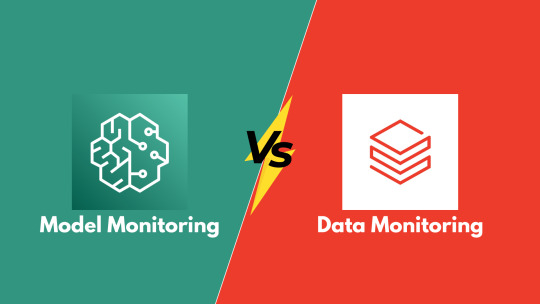
This is a ripe problem space as many models have been deployed in production. Hence there are many point solutions such as Great Expectations, Neptune.ai, Fiddler.ai who all boast really cool features either in terms of automatic metrics computation, differentiated statistical methods or Responsible AI hype that has become a real need of time (Thanks to ChatGPT and LLMs). In this Op-ed, I would like to touch upon two systems that I am familiar with and are widely used.
Amazon SageMaker Model Monitor
Amazon SageMaker is AWS’s flagship fully managed ML service to Build, Train, Deploy & “Monitor” Machine Learning models. The service provides click through experience for set up using SageMaker Studio or API experience using SageMaker SDK. SageMaker assumes you to have clean datasets for training and can capture inference request/response based on user defined time interval. The system works for model monitoring if models are the problem, BUT What if Data that is fed to the model is a problem or a pipeline well upstream in ETL pipeline is a problem. AWS provides multiple Data Lake architectures and patterns to stitch end-2-end data and AI systems together but tracking data lineage is easy if not impossible.
The monitoring solution is flexible thanks to SageMaker processing job which is underlying mechanism to execute underlying metrics. SageMaker processing also lets you build your custom container. SageMaker model monitoring is integrated with Amazon SageMaker Clarify and can provide Bias Drift which is important for Responsible AI. Overall SageMaker monitoring does a decent job of alerting when model drifts.

Databricks Lakehouse Monitoring
Let's look at the second contender. Databricks is a fully managed Data and AI platform available across all major clouds and also boasts millions of downloads of MLFlow OSS. I have recently come across Databricks Lakehouse Monitoring which IMO is a really cool paradigm of Monitoring your Data assets.
Let me explain why you should care if you are an ML Engineer or Data Scientist?
Let's say you have built a cool customer segmentation model and deployed it in production. You have started monitoring the model using one of the cool bespoke tools I mentioned earlier which may pop up an alert blaming a Data field. Now What?
✔ How do you track where that field came from cobweb of data ETL pipeline?
✔ How do you find the root cause of the drift?
✔ How do you track where that field came from cobweb of data ETL pipeline?
Here comes Databricks Lakehouse Monitoring to the rescue. Databricks Lakehouse Monitoring lets you monitor all of the tables in your account. You can also use it to track the performance of machine learning models and model-serving endpoints by monitoring inference tables created by the model’s output.
Let's put this in perspective, Data Layer is a foundation of AI. When teams across data and AI portfolios work together in a single platform, productivity of ML Teams, Access to Data assets and Governance is much superior compared to siloed or point solution.
The Vision below essentially captures an ideal Data and Model Monitoring solution. The journey starts with raw data with Bronze -> Silver -> Golden layers. Moreover, Features are also treated as another table (That’s refreshing and new paradigm, Goodbye feature stores). Now you get down to ML brass tacks by using Golden/Feature Tables for Model training and serve that model up.
Databricks recently launched in preview awesome Inference table feature. Imagine all your requests/responses captured as a table than raw files in your object store. Possibilities are limitless if the Table can scale. Once you have ground truth after the fact, just start logging it in Groundtruth Table. Since all this data is being ETLed using Databricks components, the Unity catalog offers nice end-2-end data lineage similar to Delta Live Tables.
Now you can turn on Monitors, and Databricks start computing metrics. Any Data Drift or Model Drift can be root caused to upstream ETL tables or source code. Imagine that you love other tools in the market for monitoring, then just have them crawl these tables and get your own insights.

Looks like Databricks want to take it up the notch by extending Expectations framework in DLT to extend to any Delta Table. Imagine the ability to set up column level constraints and instructing jobs to fail, rollback or default. So, it means problems can be pre-empted before they happen. Can't wait to see this evolution in the next few months.

To summarize, I came up with the following comparison between SageMaker and Databricks Model Monitoring.CapabilityWinnerSageMakerDatabricksRoot cause AnalysisDatabricksConstraint and violations due to concept and model driftExtends RCA to upstream ETL pipelines as lineage is maintainedBuilt-in statisticsSageMakerUses Deque Spark library and SageMaker Clarify for Bias driftUnderlying metrics library is not exposed but most likely Spark libraryDashboardingDatabricksAvailable using SageMaker Studio so it is a mustRedash dashboards are built and can be customized or use your favorite BI tool.AlertingDatabricksNeeds additional configuration using Event BridgeBuilt in alertingCustomizabilityBothUses Processing jobs so customization of your own metricsMost metrics are built-in, but dashboards can be customizedUse case coverageSageMakerCoverage for Tabular and NLP use casesCoverage for tabular use casesEase of UseDatabricksOne-click enablementOne-click enablement but bonus for monitoring upstream ETL tables
Hope you enjoyed the quick read. Hope you can engage Propensity Labs for your next Machine Learning project no matter how hard the problem is, we have a solution. Keep monitoring.
0 notes
Text
Transform Your Team into Data Engineering Pros with ScholarNest Technologies

In the fast-evolving landscape of data engineering, the ability to transform your team into proficient professionals is a strategic imperative. ScholarNest Technologies stands at the forefront of this transformation, offering comprehensive programs that equip individuals with the skills and certifications necessary to excel in the dynamic field of data engineering. Let's delve into the world of data engineering excellence and understand how ScholarNest is shaping the data engineers of tomorrow.
Empowering Through Education: The Essence of Data Engineering
Data engineering is the backbone of current data-driven enterprises. It involves the collection, processing, and storage of data in a way that facilitates effective analysis and insights. ScholarNest Technologies recognizes the pivotal role data engineering plays in today's technological landscape and has curated a range of courses and certifications to empower individuals in mastering this discipline.
Comprehensive Courses and Certifications: ScholarNest's Commitment to Excellence
1. Data Engineering Courses: ScholarNest offers comprehensive data engineering courses designed to provide a deep understanding of the principles, tools, and technologies essential for effective data processing. These courses cover a spectrum of topics, including data modeling, ETL (Extract, Transform, Load) processes, and database management.
2. Pyspark Mastery: Pyspark, a powerful data processing library for Python, is a key component of modern data engineering. ScholarNest's Pyspark courses, including options for beginners and full courses, ensure participants acquire proficiency in leveraging this tool for scalable and efficient data processing.
3. Databricks Learning: Databricks, with its unified analytics platform, is integral to modern data engineering workflows. ScholarNest provides specialized courses on Databricks learning, enabling individuals to harness the full potential of this platform for advanced analytics and data science.
4. Azure Databricks Training: Recognizing the industry shift towards cloud-based solutions, ScholarNest offers courses focused on Azure Databricks. This training equips participants with the skills to leverage Databricks in the Azure cloud environment, ensuring they are well-versed in cutting-edge technologies.
From Novice to Expert: ScholarNest's Approach to Learning
Whether you're a novice looking to learn the fundamentals or an experienced professional seeking advanced certifications, ScholarNest caters to diverse learning needs. Courses such as "Learn Databricks from Scratch" and "Machine Learning with Pyspark" provide a structured pathway for individuals at different stages of their data engineering journey.
Hands-On Learning and Certification: ScholarNest places a strong emphasis on hands-on learning. Courses include practical exercises, real-world projects, and assessments to ensure that participants not only grasp theoretical concepts but also gain practical proficiency. Additionally, certifications such as the Databricks Data Engineer Certification validate the skills acquired during the training.
The ScholarNest Advantage: Shaping Data Engineering Professionals
ScholarNest Technologies goes beyond traditional education paradigms, offering a transformative learning experience that prepares individuals for the challenges and opportunities in the world of data engineering. By providing access to the best Pyspark and Databricks courses online, ScholarNest is committed to fostering a community of skilled data engineering professionals who will drive innovation and excellence in the ever-evolving data landscape. Join ScholarNest on the journey to unlock the full potential of your team in the realm of data engineering.
#big data#big data consulting#data engineering#data engineering course#data engineering certification#databricks data engineer certification#pyspark course#databricks courses online#best pyspark course online#best pyspark course#pyspark online course#databricks learning#data engineering courses in bangalore#data engineering courses in india#azure databricks learning#pyspark training course
1 note
·
View note
Text
Tech conferences are not for me.
For the last two days I've been helping to run a demo booth for my company at the Databricks summit and while I really enjoy the customer interaction and demoing and learning from my peers, the sheer quantity of stimulus from 8am to 8pm is breaking my brain.
On the expo floor they play club remixes of popular songs at high volume all day, so your baseline is shouting. And then you have thousands of people all shouting over each other on top of that. And the overhead lights are hella bright and most of the booths have LED lights and all the monitors are glaring to the point that I feel like the lights all have sounds too.
Tonight I got back to my hotel room with my takeaway dinner and I was so relieved to be in a quiet place I literally started crying. I hadn't eaten since breakfast because there weren't GF lunch options, though, so I didn't stop eating my tofu and rice noodles. I was just ugly sobbing while trying to stuff my face.
And what's wild is that most of my coworkers were headed to dinner together at a bar/restaurant AFTER scream-talking for 10 hours that day.
Like, sure my brain isn't normal but I feel like that's an excessive amount of socializing even for neurotypical people.
Anyway, me and my vendor swag homies are going to watch some HGTV and go to sleep early because we've got to do it all over again tomorrow.

#a moped almost ran we over on my walk back to the hotel#and my first thought was that if i ended up in the hospital they wouldn't expect me to go back tomorrow which might be worth it#lol#mylife#neurospicy
121 notes
·
View notes
Text
Elon Musk’s so-called Department of Government Efficiency (DOGE) has plans to stage a “hackathon” next week in Washington, DC. The goal is to create a single “mega API”—a bridge that lets software systems talk to one another—for accessing IRS data, sources tell WIRED. The agency is expected to partner with a third-party vendor to manage certain aspects of the data project. Palantir, a software company cofounded by billionaire and Musk associate Peter Thiel, has been brought up consistently by DOGE representatives as a possible candidate, sources tell WIRED.
Two top DOGE operatives at the IRS, Sam Corcos and Gavin Kliger, are helping to orchestrate the hackathon, sources tell WIRED. Corcos is a health-tech CEO with ties to Musk’s SpaceX. Kliger attended UC Berkeley until 2020 and worked at the AI company Databricks before joining DOGE as a special adviser to the director at the Office of Personnel Management (OPM). Corcos is also a special adviser to Treasury Secretary Scott Bessent.
Since joining Musk’s DOGE, Corcos has told IRS workers that he wants to pause all engineering work and cancel current attempts to modernize the agency’s systems, according to sources with direct knowledge who spoke with WIRED. He has also spoken about some aspects of these cuts publicly: "We've so far stopped work and cut about $1.5 billion from the modernization budget. Mostly projects that were going to continue to put us down the death spiral of complexity in our code base," Corcos told Laura Ingraham on Fox News in March.
Corcos has discussed plans for DOGE to build “one new API to rule them all,” making IRS data more easily accessible for cloud platforms, sources say. APIs, or application programming interfaces, enable different applications to exchange data, and could be used to move IRS data into the cloud. The cloud platform could become the “read center of all IRS systems,” a source with direct knowledge tells WIRED, meaning anyone with access could view and possibly manipulate all IRS data in one place.
Over the last few weeks, DOGE has requested the names of the IRS’s best engineers from agency staffers. Next week, DOGE and IRS leadership are expected to host dozens of engineers in DC so they can begin “ripping up the old systems” and building the API, an IRS engineering source tells WIRED. The goal is to have this task completed within 30 days. Sources say there have been multiple discussions about involving third-party cloud and software providers like Palantir in the implementation.
Corcos and DOGE indicated to IRS employees that they intended to first apply the API to the agency’s mainframes and then move on to every other internal system. Initiating a plan like this would likely touch all data within the IRS, including taxpayer names, addresses, social security numbers, as well as tax return and employment data. Currently, the IRS runs on dozens of disparate systems housed in on-premises data centers and in the cloud that are purposefully compartmentalized. Accessing these systems requires special permissions and workers are typically only granted access on a need-to-know basis.
A “mega API” could potentially allow someone with access to export all IRS data to the systems of their choosing, including private entities. If that person also had access to other interoperable datasets at separate government agencies, they could compare them against IRS data for their own purposes.
“Schematizing this data and understanding it would take years,” an IRS source tells WIRED. “Just even thinking through the data would take a long time, because these people have no experience, not only in government, but in the IRS or with taxes or anything else.” (“There is a lot of stuff that I don't know that I am learning now,” Corcos tells Ingraham in the Fox interview. “I know a lot about software systems, that's why I was brought in.")
These systems have all gone through a tedious approval process to ensure the security of taxpayer data. Whatever may replace them would likely still need to be properly vetted, sources tell WIRED.
"It's basically an open door controlled by Musk for all American's most sensitive information with none of the rules that normally secure that data," an IRS worker alleges to WIRED.
The data consolidation effort aligns with President Donald Trump’s executive order from March 20, which directed agencies to eliminate information silos. While the order was purportedly aimed at fighting fraud and waste, it also could threaten privacy by consolidating personal data housed on different systems into a central repository, WIRED previously reported.
In a statement provided to WIRED on Saturday, a Treasury spokesperson said the department “is pleased to have gathered a team of long-time IRS engineers who have been identified as the most talented technical personnel. Through this coalition, they will streamline IRS systems to create the most efficient service for the American taxpayer. This week the team will be participating in the IRS Roadmapping Kickoff, a seminar of various strategy sessions, as they work diligently to create efficient systems. This new leadership and direction will maximize their capabilities and serve as the tech-enabled force multiplier that the IRS has needed for decades.”
Palantir, Sam Corcos, and Gavin Kliger did not immediately respond to requests for comment.
In February, a memo was drafted to provide Kliger with access to personal taxpayer data at the IRS, The Washington Post reported. Kliger was ultimately provided read-only access to anonymized tax data, similar to what academics use for research. Weeks later, Corcos arrived, demanding detailed taxpayer and vendor information as a means of combating fraud, according to the Post.
“The IRS has some pretty legacy infrastructure. It's actually very similar to what banks have been using. It's old mainframes running COBOL and Assembly and the challenge has been, how do we migrate that to a modern system?” Corcos told Ingraham in the same Fox News interview. Corcos said he plans to continue his work at IRS for a total of six months.
DOGE has already slashed and burned modernization projects at other agencies, replacing them with smaller teams and tighter timelines. At the Social Security Administration, DOGE representatives are planning to move all of the agency’s data off of legacy programming languages like COBOL and into something like Java, WIRED reported last week.
Last Friday, DOGE suddenly placed around 50 IRS technologists on administrative leave. On Thursday, even more technologists were cut, including the director of cybersecurity architecture and implementation, deputy chief information security officer, and acting director of security risk management. IRS’s chief technology officer, Kaschit Pandya, is one of the few technology officials left at the agency, sources say.
DOGE originally expected the API project to take a year, multiple IRS sources say, but that timeline has shortened dramatically down to a few weeks. “That is not only not technically possible, that's also not a reasonable idea, that will cripple the IRS,” an IRS employee source tells WIRED. “It will also potentially endanger filing season next year, because obviously all these other systems they’re pulling people away from are important.”
(Corcos also made it clear to IRS employees that he wanted to kill the agency’s Direct File program, the IRS’s recently released free tax-filing service.)
DOGE’s focus on obtaining and moving sensitive IRS data to a central viewing platform has spooked privacy and civil liberties experts.
“It’s hard to imagine more sensitive data than the financial information the IRS holds,” Evan Greer, director of Fight for the Future, a digital civil rights organization, tells WIRED.
Palantir received the highest FedRAMP approval this past December for its entire product suite, including Palantir Federal Cloud Service (PFCS) which provides a cloud environment for federal agencies to implement the company’s software platforms, like Gotham and Foundry. FedRAMP stands for Federal Risk and Authorization Management Program and assesses cloud products for security risks before governmental use.
“We love disruption and whatever is good for America will be good for Americans and very good for Palantir,” Palantir CEO Alex Karp said in a February earnings call. “Disruption at the end of the day exposes things that aren't working. There will be ups and downs. This is a revolution, some people are going to get their heads cut off.”
15 notes
·
View notes
Text
Master Big Data with a Comprehensive Databricks Course
A Databricks Course is the perfect way to master big data analytics and Apache Spark. Whether you are a beginner or an experienced professional, this course helps you build expertise in data engineering, AI-driven analytics, and cloud-based collaboration. You will learn how to work with Spark SQL, Delta Lake, and MLflow to process large datasets and create smart data solutions.
This Databricks Course provides hands-on training with real-world projects, allowing you to apply your knowledge effectively. Learn from industry experts who will guide you through data transformation, real-time streaming, and optimizing data workflows. The course also covers managing both structured and unstructured data, helping you make better data-driven decisions.
By enrolling in this Databricks Course, you will gain valuable skills that are highly sought after in the tech industry. Engage with specialists and improve your ability to handle big data analytics at scale. Whether you want to advance your career or stay ahead in the fast-growing data industry, this course equips you with the right tools.
🚀 Enroll now and start your journey toward mastering big data analytics with Databricks!
2 notes
·
View notes
Text
Azure Data Factory Training In Hyderabad
Key Features:
Hybrid Data Integration: Azure Data Factory supports hybrid data integration, allowing users to connect and integrate data from on-premises sources, cloud-based services, and various data stores. This flexibility is crucial for organizations with diverse data ecosystems.
Intuitive Visual Interface: The platform offers a user-friendly, visual interface for designing and managing data pipelines. Users can leverage a drag-and-drop interface to effortlessly create, monitor, and manage complex data workflows without the need for extensive coding expertise.

Data Movement and Transformation: Data movement is streamlined with Azure Data Factory, enabling the efficient transfer of data between various sources and destinations. Additionally, the platform provides a range of data transformation activities, such as cleansing, aggregation, and enrichment, ensuring that data is prepared and optimized for analysis.
Data Orchestration: Organizations can orchestrate complex workflows by chaining together multiple data pipelines, activities, and dependencies. This orchestration capability ensures that data processes are executed in a logical and efficient sequence, meeting business requirements and compliance standards.
Integration with Azure Services: Azure Data Factory seamlessly integrates with other Azure services, including Azure Synapse Analytics, Azure Databricks, Azure Machine Learning, and more. This integration enhances the platform's capabilities, allowing users to leverage additional tools and services to derive deeper insights from their data.
Monitoring and Management: Robust monitoring and management capabilities provide real-time insights into the performance and health of data pipelines. Users can track execution details, diagnose issues, and optimize workflows to enhance overall efficiency.
Security and Compliance: Azure Data Factory prioritizes security and compliance, implementing features such as Azure Active Directory integration, encryption at rest and in transit, and role-based access control. This ensures that sensitive data is handled securely and in accordance with regulatory requirements.
Scalability and Reliability: The platform is designed to scale horizontally, accommodating the growing needs of organizations as their data volumes increase. With built-in reliability features, Azure Data Factory ensures that data processes are executed consistently and without disruptions.
2 notes
·
View notes
Text
Maximize Efficiency with Volumes in Databricks Unity Catalog
With Databricks Unity Catalog's volumes feature, managing data has become a breeze. Regardless of the format or location, the organization can now effortlessly access and organize its data. This newfound simplicity and organization streamline data managem
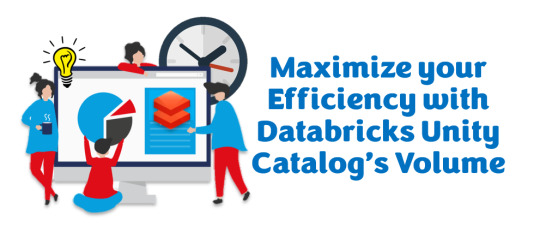
View On WordPress
#Cloud#Data Analysis#Data management#Data Pipeline#Data types#Databricks#Databricks SQL#Databricks Unity catalog#DBFS#Delta Sharing#machine learning#Non-tabular Data#performance#Performance Optimization#Spark#SQL#SQL database#Tabular Data#Unity Catalog#Unstructured Data#Volumes in Databricks
0 notes
Text
From Math to Machine Learning: A Comprehensive Blueprint for Aspiring Data Scientists
The realm of data science is vast and dynamic, offering a plethora of opportunities for those willing to dive into the world of numbers, algorithms, and insights. If you're new to data science and unsure where to start, fear not! This step-by-step guide will navigate you through the foundational concepts and essential skills to kickstart your journey in this exciting field. Choosing the Best Data Science Institute can further accelerate your journey into this thriving industry.
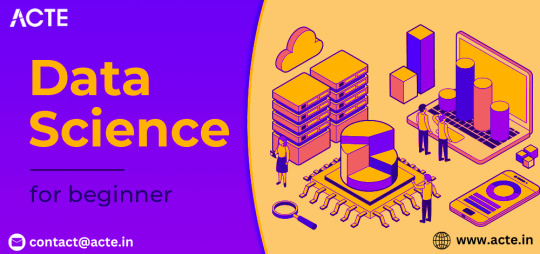
1. Establish a Strong Foundation in Mathematics and Statistics
Before delving into the specifics of data science, ensure you have a robust foundation in mathematics and statistics. Brush up on concepts like algebra, calculus, probability, and statistical inference. Online platforms such as Khan Academy and Coursera offer excellent resources for reinforcing these fundamental skills.
2. Learn Programming Languages
Data science is synonymous with coding. Choose a programming language – Python and R are popular choices – and become proficient in it. Platforms like Codecademy, DataCamp, and W3Schools provide interactive courses to help you get started on your coding journey.
3. Grasp the Basics of Data Manipulation and Analysis
Understanding how to work with data is at the core of data science. Familiarize yourself with libraries like Pandas in Python or data frames in R. Learn about data structures, and explore techniques for cleaning and preprocessing data. Utilize real-world datasets from platforms like Kaggle for hands-on practice.
4. Dive into Data Visualization
Data visualization is a powerful tool for conveying insights. Learn how to create compelling visualizations using tools like Matplotlib and Seaborn in Python, or ggplot2 in R. Effectively communicating data findings is a crucial aspect of a data scientist's role.
5. Explore Machine Learning Fundamentals
Begin your journey into machine learning by understanding the basics. Grasp concepts like supervised and unsupervised learning, classification, regression, and key algorithms such as linear regression and decision trees. Platforms like scikit-learn in Python offer practical, hands-on experience.
6. Delve into Big Data Technologies
As data scales, so does the need for technologies that can handle large datasets. Familiarize yourself with big data technologies, particularly Apache Hadoop and Apache Spark. Platforms like Cloudera and Databricks provide tutorials suitable for beginners.
7. Enroll in Online Courses and Specializations
Structured learning paths are invaluable for beginners. Enroll in online courses and specializations tailored for data science novices. Platforms like Coursera ("Data Science and Machine Learning Bootcamp with R/Python") and edX ("Introduction to Data Science") offer comprehensive learning opportunities.
8. Build Practical Projects
Apply your newfound knowledge by working on practical projects. Analyze datasets, implement machine learning models, and solve real-world problems. Platforms like Kaggle provide a collaborative space for participating in data science competitions and showcasing your skills to the community.
9. Join Data Science Communities
Engaging with the data science community is a key aspect of your learning journey. Participate in discussions on platforms like Stack Overflow, explore communities on Reddit (r/datascience), and connect with professionals on LinkedIn. Networking can provide valuable insights and support.
10. Continuous Learning and Specialization
Data science is a field that evolves rapidly. Embrace continuous learning and explore specialized areas based on your interests. Dive into natural language processing, computer vision, or reinforcement learning as you progress and discover your passion within the broader data science landscape.
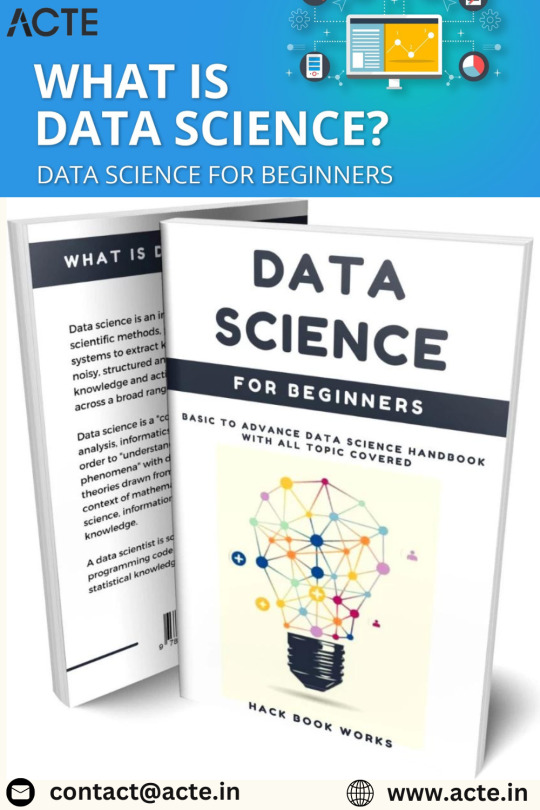
Remember, your journey in data science is a continuous process of learning, application, and growth. Seek guidance from online forums, contribute to discussions, and build a portfolio that showcases your projects. Choosing the best Data Science Courses in Chennai is a crucial step in acquiring the necessary expertise for a successful career in the evolving landscape of data science. With dedication and a systematic approach, you'll find yourself progressing steadily in the fascinating world of data science. Good luck on your journey!
3 notes
·
View notes
Text
Azure Data Engineering Tools For Data Engineers
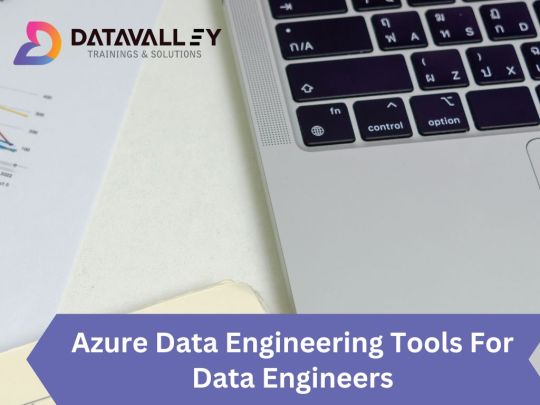
Azure is a cloud computing platform provided by Microsoft, which presents an extensive array of data engineering tools. These tools serve to assist data engineers in constructing and upholding data systems that possess the qualities of scalability, reliability, and security. Moreover, Azure data engineering tools facilitate the creation and management of data systems that cater to the unique requirements of an organization.
In this article, we will explore nine key Azure data engineering tools that should be in every data engineer’s toolkit. Whether you’re a beginner in data engineering or aiming to enhance your skills, these Azure tools are crucial for your career development.
Microsoft Azure Databricks
Azure Databricks is a managed version of Databricks, a popular data analytics and machine learning platform. It offers one-click installation, faster workflows, and collaborative workspaces for data scientists and engineers. Azure Databricks seamlessly integrates with Azure’s computation and storage resources, making it an excellent choice for collaborative data projects.
Microsoft Azure Data Factory
Microsoft Azure Data Factory (ADF) is a fully-managed, serverless data integration tool designed to handle data at scale. It enables data engineers to acquire, analyze, and process large volumes of data efficiently. ADF supports various use cases, including data engineering, operational data integration, analytics, and data warehousing.
Microsoft Azure Stream Analytics
Azure Stream Analytics is a real-time, complex event-processing engine designed to analyze and process large volumes of fast-streaming data from various sources. It is a critical tool for data engineers dealing with real-time data analysis and processing.
Microsoft Azure Data Lake Storage
Azure Data Lake Storage provides a scalable and secure data lake solution for data scientists, developers, and analysts. It allows organizations to store data of any type and size while supporting low-latency workloads. Data engineers can take advantage of this infrastructure to build and maintain data pipelines. Azure Data Lake Storage also offers enterprise-grade security features for data collaboration.
Microsoft Azure Synapse Analytics
Azure Synapse Analytics is an integrated platform solution that combines data warehousing, data connectors, ETL pipelines, analytics tools, big data scalability, and visualization capabilities. Data engineers can efficiently process data for warehousing and analytics using Synapse Pipelines’ ETL and data integration capabilities.
Microsoft Azure Cosmos DB
Azure Cosmos DB is a fully managed and server-less distributed database service that supports multiple data models, including PostgreSQL, MongoDB, and Apache Cassandra. It offers automatic and immediate scalability, single-digit millisecond reads and writes, and high availability for NoSQL data. Azure Cosmos DB is a versatile tool for data engineers looking to develop high-performance applications.
Microsoft Azure SQL Database
Azure SQL Database is a fully managed and continually updated relational database service in the cloud. It offers native support for services like Azure Functions and Azure App Service, simplifying application development. Data engineers can use Azure SQL Database to handle real-time data ingestion tasks efficiently.
Microsoft Azure MariaDB
Azure Database for MariaDB provides seamless integration with Azure Web Apps and supports popular open-source frameworks and languages like WordPress and Drupal. It offers built-in monitoring, security, automatic backups, and patching at no additional cost.
Microsoft Azure PostgreSQL Database
Azure PostgreSQL Database is a fully managed open-source database service designed to emphasize application innovation rather than database management. It supports various open-source frameworks and languages and offers superior security, performance optimization through AI, and high uptime guarantees.
Whether you’re a novice data engineer or an experienced professional, mastering these Azure data engineering tools is essential for advancing your career in the data-driven world. As technology evolves and data continues to grow, data engineers with expertise in Azure tools are in high demand. Start your journey to becoming a proficient data engineer with these powerful Azure tools and resources.
Unlock the full potential of your data engineering career with Datavalley. As you start your journey to becoming a skilled data engineer, it’s essential to equip yourself with the right tools and knowledge. The Azure data engineering tools we’ve explored in this article are your gateway to effectively managing and using data for impactful insights and decision-making.
To take your data engineering skills to the next level and gain practical, hands-on experience with these tools, we invite you to join the courses at Datavalley. Our comprehensive data engineering courses are designed to provide you with the expertise you need to excel in the dynamic field of data engineering. Whether you’re just starting or looking to advance your career, Datavalley’s courses offer a structured learning path and real-world projects that will set you on the path to success.
Course format:
Subject: Data Engineering Classes: 200 hours of live classes Lectures: 199 lectures Projects: Collaborative projects and mini projects for each module Level: All levels Scholarship: Up to 70% scholarship on this course Interactive activities: labs, quizzes, scenario walk-throughs Placement Assistance: Resume preparation, soft skills training, interview preparation
Subject: DevOps Classes: 180+ hours of live classes Lectures: 300 lectures Projects: Collaborative projects and mini projects for each module Level: All levels Scholarship: Up to 67% scholarship on this course Interactive activities: labs, quizzes, scenario walk-throughs Placement Assistance: Resume preparation, soft skills training, interview preparation
For more details on the Data Engineering courses, visit Datavalley’s official website.
#datavalley#dataexperts#data engineering#data analytics#dataexcellence#data science#power bi#business intelligence#data analytics course#data science course#data engineering course#data engineering training
3 notes
·
View notes